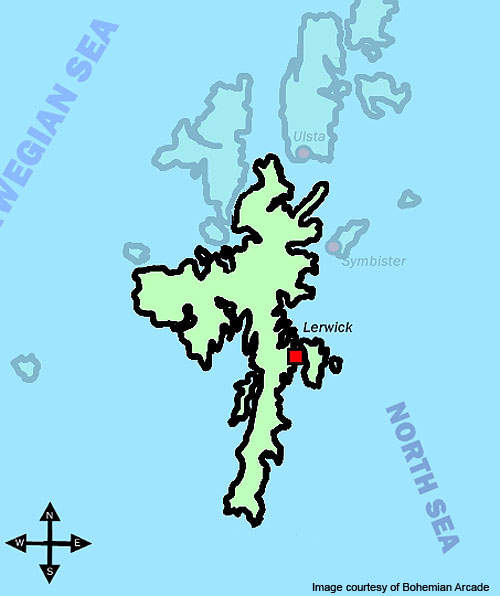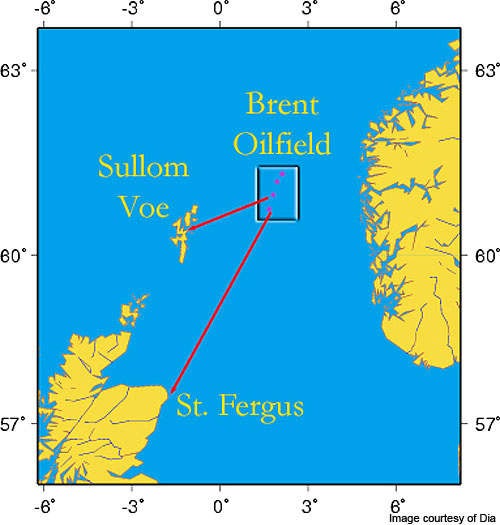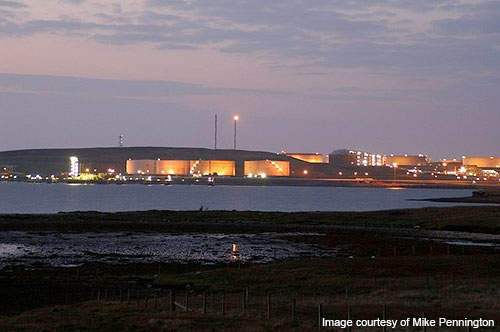The Brent oil and gas field is located 186km off the north-east coast of the Shetland Islands, Scotland. It lies within UK licence block 211/29, at a depth of 140m. The field includes four large platforms: Alpha, Bravo, Charlie and Delta.
The field is jointly owned by Royal Dutch Shell (50%) and ExxonMobil (50%), and is Shell’s flagship asset on the UK Continental Shelf.
Decommisioning project
In 2006, Shell initiated plans to decommission the Brent field’s ageing platforms. The company has been in talks with the Department of Energy and Climate Change (DECC) to formulate a long-term end of field life process and is undergoing an environmental impact assessment (EIA).
Shell also approached the International Union for Conservation of Nature to develop the decommissioning strategy.
Decommissioning of the field has been divided into five different stages. The first stage involving identification of viable decommissioning options has already been completed. The second stage was completed in 2011 and involved the selection of the final concept for decommissioning.
The third stage is currently in progress and includes detailed engineering of the project. The fourth and fifth stage will include project execution and monitoring respectively.
Shell plans to submit the decommissioning programme along with the EIA for approval to the DECC in 2013.
Brent field discovery
The Brent field was discovered by Shell-Esso in 1971 and is one of the largest oilfields in the UK North Sea. A discovery well was drilled around 1km down-dip to the west of the tip of the buried high. It is located 150km north-east of Shetland and lies in a water depth of 142m.
The first well found an oil column of 60m, and the second well found 53m of gas overlying 114m of net oil sand. The wells encountered water below the oil. The second well was drilled deeper and encountered the Lower Jurassic Statifined sands where it cored the entire productive interval. Three production tests were conducted and formation interval tests revealed that the oil was saturated with gas at the oil-water contact; however, the gas-oil solution ratio increased upward to the gas-oil contact.
Geology of the Brent field
The Brent field lies in the East Shetland Basin, which includes a tilted fault block exposing the eponymous Brent formation beside bounding faults. The formation let migration from deeper side-by-side kitchen areas where the Kimmeridge clay formation becomes fully mature and releases hydrocarbons.
The seal or cap rock for the reservoir is also formed from Kimmeridge clay.
Field infrastructure
The Brent field is exploited by four platforms. The first platform installed was the concrete-legged Brent Bravo, followed by the Brent Delta, Brent Charlie and steel-jacketed Brent Alpha. The fifth floating installation, Brent Spar, was a storage and tanker loading buoy.
Brent Spar became the best known of the Brent installations in the oil industry. It was taken out of service in 1991.
A remote flare known as the Brent flare was also installed on the field. It was used to flare off surplus gas before gas-handling and export facilities were set up. A heavy lifting barge was deployed to decommission and remove the Brent flare in 2005.
Brent Delta was taken out of production in December 2011, after 34 years of service. Removal of the platform’s topsides is not expected to start before 2015. Production on Alpha and Bravo platforms is planned to be shut down in late 2013. Brent Charlie is expected to be taken out of service
Brent production
First oil from the Brent field was produced in November 1976. The field underwent a £1.3bn upgrade in the mid-1990s. It was the largest and most comprehensive field redevelopment ever undertaken in the North Sea.
The project depressured the reservoir and modified three of the four Brent platforms to support low-pressure operations. The modification unlocked substantial quantities of natural gas from the reservoir and extended the field life up to 2010 and beyond.
Although the field will produce over a period of 30 years, production has declined from providing 10% of the UK’s gas consumption to around 1-2%. The flow of oil and gas from Brent will reach a saturation point when it will not be viable to operate the field.
Export
The oil produced from the Brent field is exported through the Brent system pipeline to the terminal located at Sullom Voe, while gas is supplied via the Far North Liquids and Associated Gas System to St Fergus on the north-east coast of Scotland. A subsea pipeline connects the Brent Charlie platform to the Penguins field.
Contracts for the Brent field
In July 2010, PSN (now Wood Group PSN) was awarded a major contract by Shell UK for decommissioning work on the Brent Delta platform’s topsides. The contract also provides scope for integrity management, safe shut-down, hydrocarbon cleaning, module, process and utility separation, disconnections and provision for the removal of the topsides. Offshore work started in late 2011 under the initial stages of Brent Delta decommissioning.
A computational fluid dynamics and finite element analysis will be conducted by DECOM North Sea under a contract awarded by Shell in August 2011. The term of the contract is 18 months, with an option to mutually extend the term.
Offshore Design Engineering, a UK-based company, conducted the decommissioning studies for Shell for the Brent Delta field.
Tender process for awarding contracts for removal of the topsides and onshore dismantling of the platforms is ongoing. The contracts are expected to be awarded in the first half of 2013.






